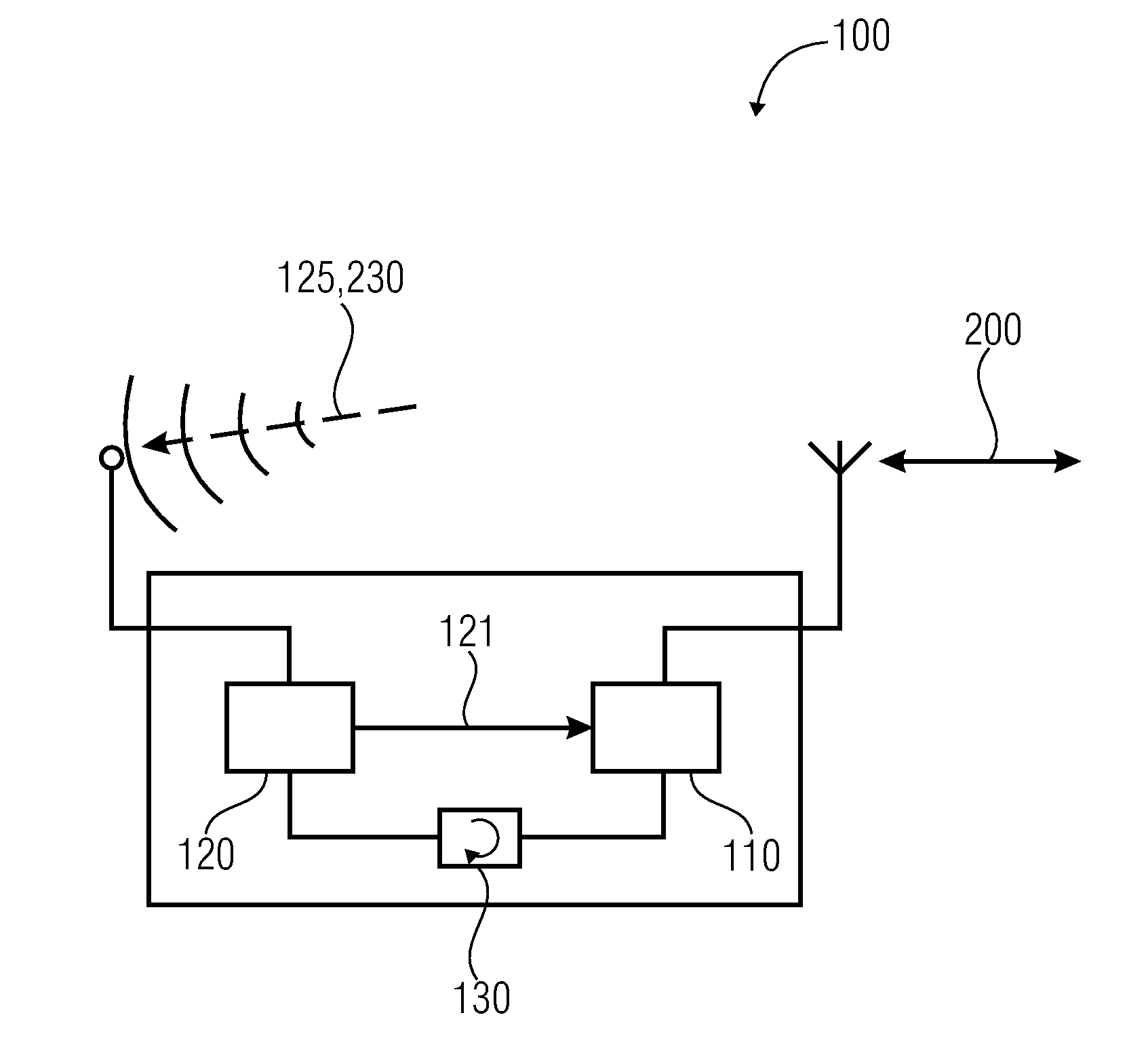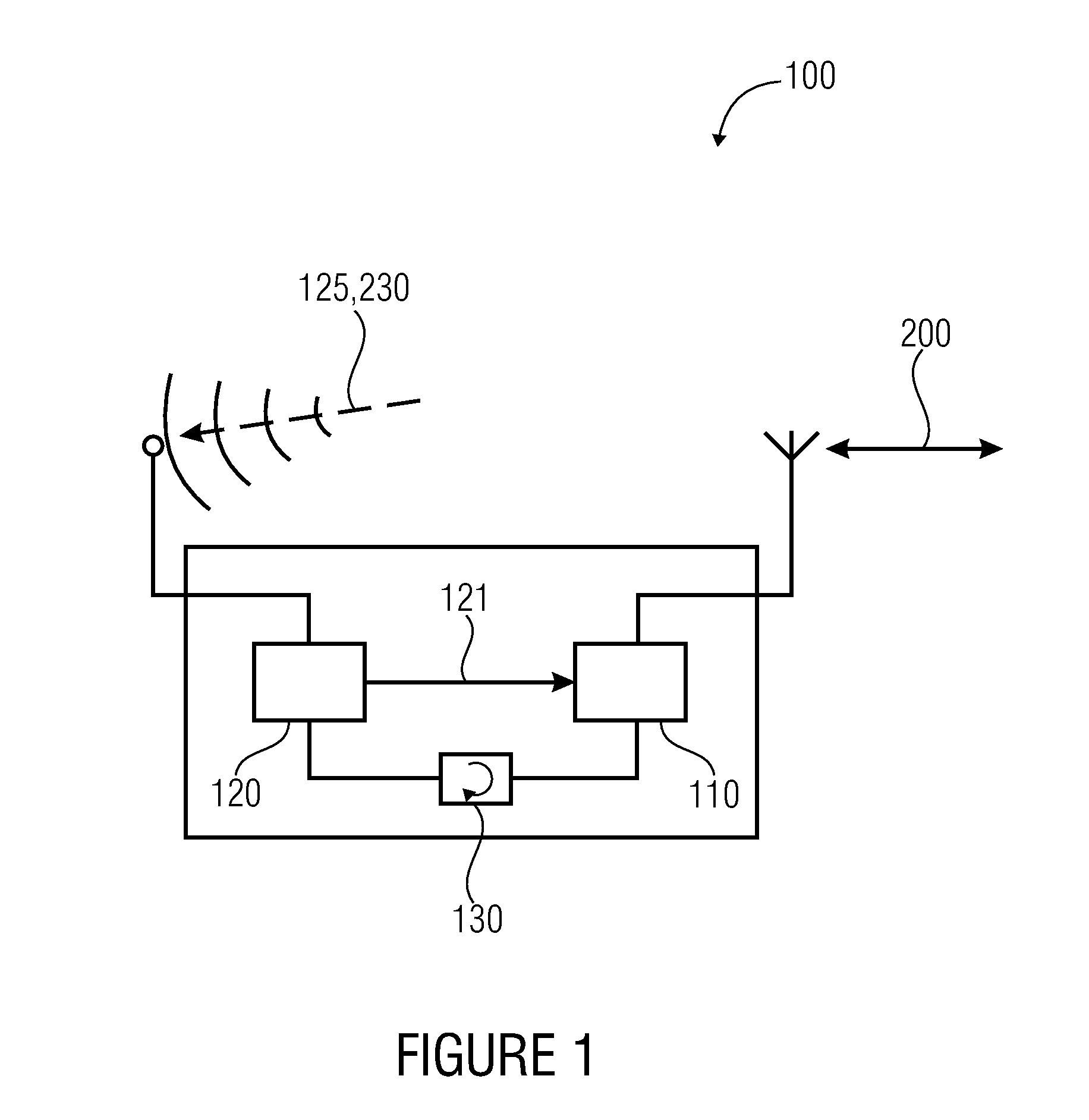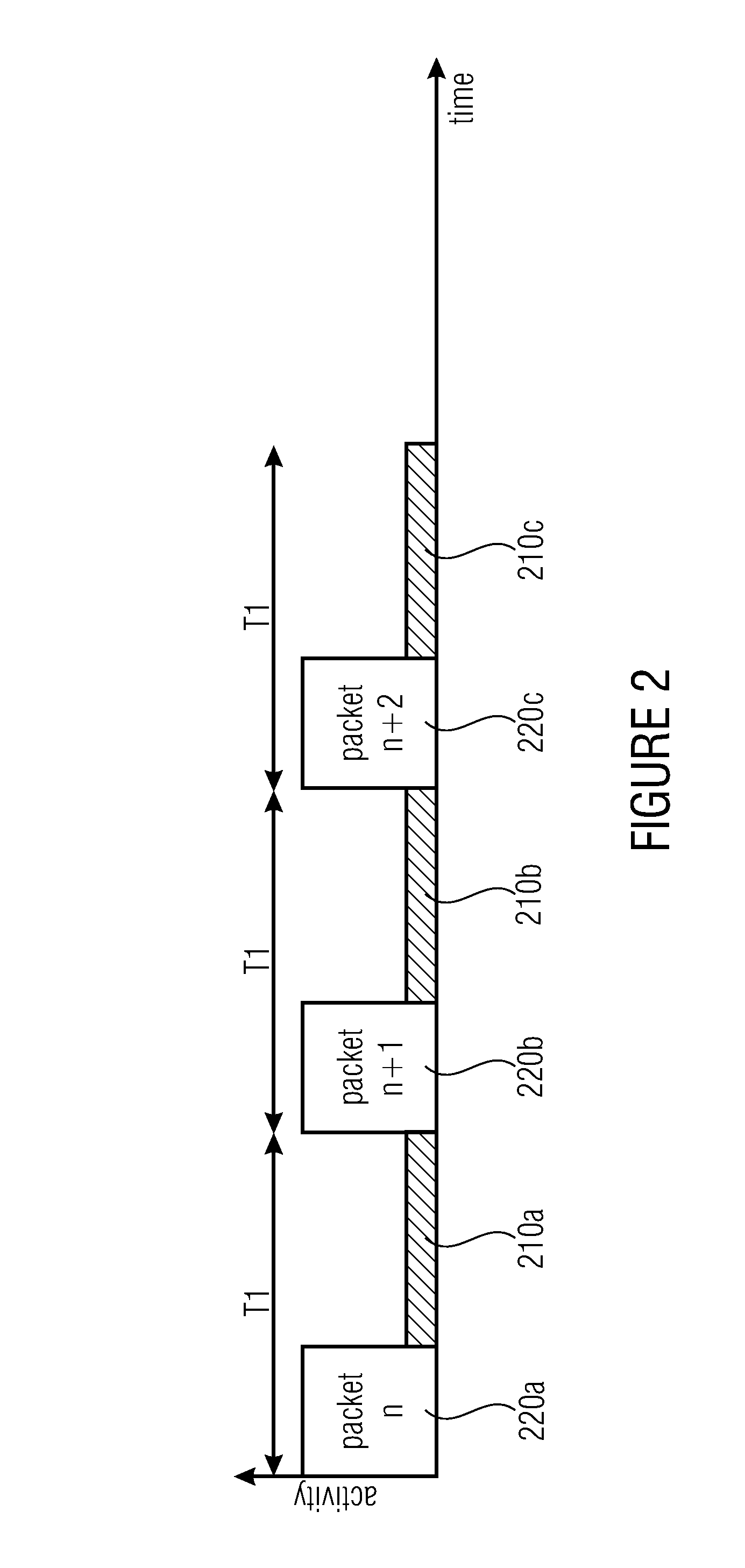[0016]The present invention is based on the finding that an energy-intensive data transmission means may be set into an idle state from which it may be activated by means of a wake-up receiver into an operating state. The wake-up receiver is implemented, in response to an initiation signal (or wake-up signal), to activate the data transmission means from the idle state into the operating state. Here, the initiation signal is implemented such that it comprises additional information (data transmission information), for example to activate the data transmission means at a certain point in time, i.e. not until a data transmission may in fact take place. Alternatively, the data transmission means is initiated with specific network parameters or data transmission parameters contained in the initiation signal. Thus, embodiments of the present invention use the wake-up signal of the wake-up receiver to transmit additional information for the purpose of enabling the data transmission means to operate as efficiently as possible: e.g., it is not switched on until the point in time when either a synchronization takes place or a data transmission may start, wherein simultaneously network parameters may be passed on so that a
time loss with respect to the network setup is minimized
[0017]Wake-up signaling thus serves, for example, to activate a synchronous,
wireless network operating with the TDMA method and a low
duty cycle,
on demand and with selectable transmission parameters. Due to the
minimum latency, events may thus be transmitted quickly. The wake-up signaling further reduces, with previously non-synchronous networks, the
energy consumption during the synchronization phase, because a waking up of the nodes does not have to be ready to receive from the wake-up time to the next synchronization message, but is informed, for example, when the synchronization message is sent, wherein the synchronization message may, for example, include the above-described
beacon. Finally, by means of the wake-up signaling, transmission parameters may be reselected (i.e. changed), which may be adapted to the time performance of the protocol, e.g. to the data
throughput to be expected.
[0018]Embodiments thus aim at the reduction of the energy consumption in the operation, for example, of wireless synchronous sensor networks and the reduction of latencies in data transmission. Sensor networks are thus especially interesting as, in particular for these networks, very long idle phases exist, from which networks are to set up very quickly in order to transmit a sensor event to a receiver without
time loss. The sensor signal may, for example, include exceeding a sensor temperature or a response of a
motion detector or an opening of a door or similar events.
[0019]According to further embodiments, each radio node (or generally network nodes) in this respect, apart from a regular transmit and receive circuit (data transmission means or main receiver) comprises a very simple wake-up receiver (WUR) which is known for an extremely low energy consumption (e.g. a
current consumption of less than 100 μA or less than 10 μA or less than 1 μA) and may thus continuously remain in the receive mode.
[0021]Embodiments also describe a method for a premature activation of a
duty cycle-based network which may be synchronous or non-synchronous (e.g. a
wireless network) in the sleep phase without synchronization losses. These methods are advantageous as the transmission parameters may be reset and adapted to the data volume. If the individual radio nodes have not been synchronous before, the inventive method allows a reduction of the energy consumption during the synchronization phase.
[0022]By the special setup of the wake-up signaling with additional information, thus the energy consumption during synchronization may be clearly minimized The activation of a previously already synchronous
wireless network is possible without a synchronization loss and with possibly changed transmission parameters (like, for example, changed frame length, time slot length, frame setup). The wake-up signal in this case contains, for example, information with respect to transmission parameters, which may, for example, include the frame setup and the time of the next data transmission.
 Login to View More
Login to View More  Login to View More
Login to View More 


